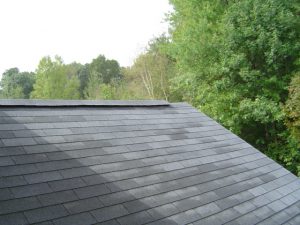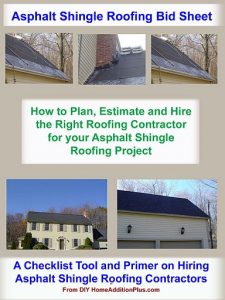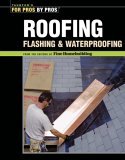Roof Design and Roof Construction Considerations when Building a Home Addition
By Mark J. Donovan
|
|
Question: Mark, I am in the process of building a home addition and have questions regarding what to be concerned about in regards to the roof, in particular how to tie in the home addition roof into the existing roof and how to protect the main home when the existing roof is opened up. Thank you for any advice you can give me on this subject. BI
Answer: BI, you raise some valid concerns. When building an addition there are two key areas you need to concern yourself with as it relates to home addition roofs, design and construction. |
First, it is important when designing the home addition to make sure the new roof ties in properly to the new home.
In some cases the home addition roof may simply butt up against one of the side walls of the existing home and not come in any contact with the main roof. In this particular case it is important to consider, however, if the home addition roof will impact any existing doors or windows. In some situations you may be able to adjust the roof pitch or position of the room addition to not impede upon an exterior door or window, but in other situations you may have no choice but to eliminate the door or window altogether.
| If your home addition roof is designed to intersect or tie into the existing roof, then you need to consider structural aspects of how the home addition roof ties into the main roof.
I have seen cases where poor room addition roof designs result in the room addition roof peak perpendicularly intersecting the main roof line such that the room addition peak is higher than the main roof peak. |
 |
Imagine looking at a colonial style home from the road, where the front of the home runs parallel to the road, and seeing a triangular point sticking up dead center above the main home roof line.
This triangular point represents where the home addition roof peak ties into the main home. Unsightly to say the least!
The second major concern when it comes to home addition roofs is during the construction phase, particularly if the home addition roof ties into the existing roof. When tying a home addition roof into an existing home’s roof, shingles need to be removed from the main roof for proper roof construction. During this phase of the home addition project the main part of the home is at risk of water damage.
| Consequently it is important that the main roof and home addition roof are shingled promptly after the construction of the home addition roof. During construction of the roof, vinyl tarps should always be placed on and fastened down over the exposed roof, while the roof remains un-shingled.
Finally, when tying in a home addition roof perpendicular to a main roof line, roof valleys are formed. Make sure that the roofing contractor installs Ice and Water Shield in the valleys. Also, you may want to consider how the valleys are shingled. You can consider weaving shingles between the roof valleys or using flashing in the valleys where the shingles from adjoining roof lines tie into the flashed valleys. |

Get this asphalt shingle roofing checklist and save time, money and hassles on your new roofing project. |
Each method has its pros and cons, so talk with your roofing contractor to see which is appropriate for your home addition and construction budget.
For more help on Shingling Your Home’s Roof, see HomeAdditionPlus.com’s Asphalt Shingle Roofing Bid Sheet. The Asphalt Shingle Roofing Bid Sheet will help to ensure that your roof won’t end up with a blue tarp over it and a dumpster sitting in your yard for weeks as you wait for the roofing contractor to come back and finish roofing your home.
Asphalt Shingle Roofing Cost Estimator
Related Roofing Information
- Cupping and Curling Shingles is a Sure Sign a New Roof is Required
- Ice and Watershield Underlayment Should be Part of Every Roofing Project
- Hiring Guide for Finding the Right Asphalt Shingle Roofing Contractor
Additional Roofing Resources from Amazon.com
 |
 |
 |
 |
Roofing Price Quotes For FREE, No Obligation!
Fill out our 3-5 minute quick and easy form, and receive a free price quote on roofing from one of our prescreened and licensed roofing contractors. This process is free and there is no obligation to continue once you receive your roofing price estimate.
